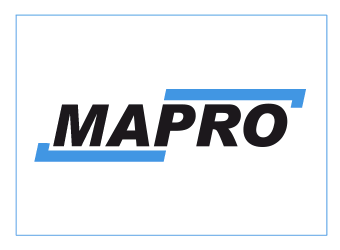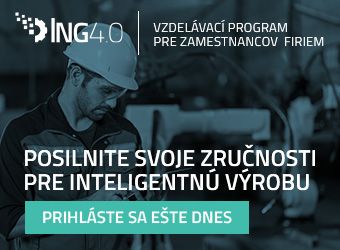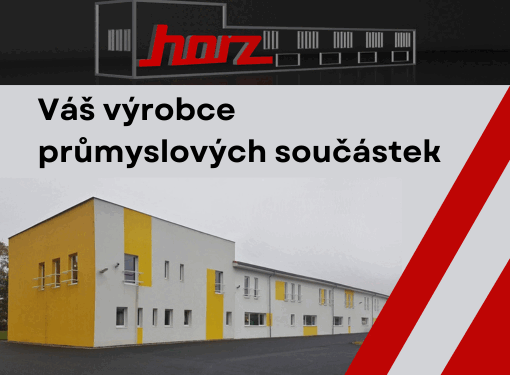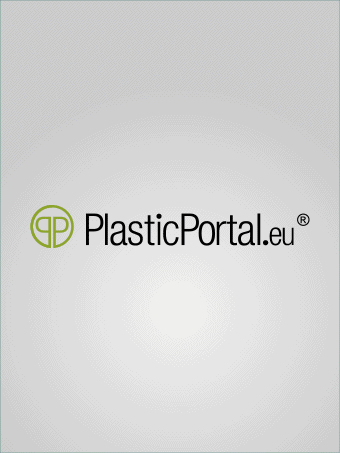LUGER: Thermo 6 from HB-Therm works with a speed-controlled pump
In view of the rapidly increasing energy costs, potential for savings in energy consumption is increasingly important, including in the plastics processing industry. HB Therm AG anticipated this exact situation when developing and implementing the new Thermo-6 unit generation and offers several configuration features for more energy efficiency when operating the temperature control units.
These include the standard speed-controlled pumps in combination with the "Energy Control" control assistants to determine the optimal operating point. The exclusive "Direct Drive" pump has up to 20 % higher efficiency compared with conventional pump systems.
In general, the main pump of a temperature control system has the task of conducting heat transfer fluid from the unit to the connected consumer and back. This allows the heat transfer to take place. The development of the pump technology as a central element for temperature control systems has made significant advances in recent years. In this context, the use of different pump designs can be outlined as follows: At first, peripheral pumps with dynamic mechanical seals were installed in the units, followed by seal-less peripheral pumps with a magnetic coupling. In the newest Thermo-6 units, peripheral pumps with integrated motor provide for permanent circulation of the temperature control medium.
Pumps with mechanical seals only have a limited service life, can develop leaks and are sensitive to dry running and abrasive media.
Pumps with a magnetic coupling are hermetically sealed and have no dynamically loaded seal. This eliminates the possibility of failures due to leaks. These pumps are constructed for higher pressures and aggressive media. However, they have a more complex construction and exhibit eddy current losses in metallic split pots.
"Direct-Drive" pumps merge motor and magnetic couplings. The torque transfer occurs from the motor winding directly to the inner rotor through the split pot. In addition to the already mentioned advantages, there are no ball bearings in the motor and the pumps have a very compact design. A split pot made of PPS polymer eliminates eddy currents and thus fewer losses. However, their design is just as complex, special motors are required and their operating range so far only extends to a maximum of 100°C.
Saves energy and costs: Peripheral pumps with split pot motor
This new technology represents an important step for HB‑Therm toward a sustainable and energy-efficient operation of its Thermo-6. Compared to the peripheral pumps with a magnetic coupling, the "Direct-Drive pump" has up to 20% higher efficiency, as the otherwise typical eddy current losses are avoided due to a non-conducting polymer split pot. The pump works with a water-cooled motor and is more compact and cost-effective in its design due to its lack of a magnet coupling or fan. The temperature range of this newest pump generation is currently limited to temperature control units up to a maximum of 100°C, but will be extended in future.
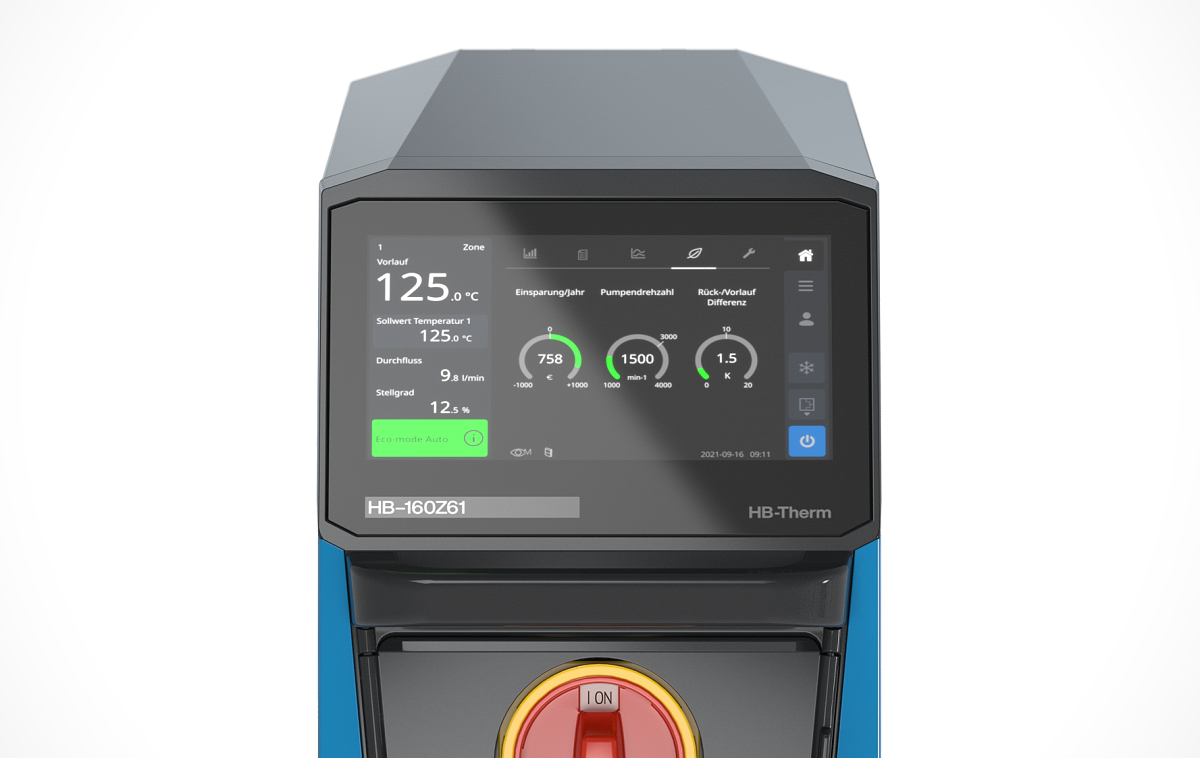 | |
| Display of the energy consumption with optimisation wizards | |
"Speed-controlled pumps' strongest suit is generally in the area of energy savings. They are universally compatible with large and small tools", explains Kurt Klopfenstein, CSO of HB‑Therm AG, summarising the advantages of the standard pumps in Thermo-6 units. Martin Braun, Head of Development at HB‑Therm, adds: "A pump that does not always run at full load not only saves energy, but also has a longer service life. The broad range of application of Speed-controlled pumps also reduces the variety of types of temperature control units. This means that a unit can fulfil its tasks over a broad range of applications."
By using a speed-controlled pump, the characteristic curve of the units can be adapted to the application in such a way that the desired flow rate is achieved with minimum energy consumption. And that is the crucial aspect: Achieving the optimal temperature control with the minimum energy usage. The correct flow rate for a process is usually not clear from the beginning. It is advisable to regulate the temperature difference in the temperature control circuit. This allows the quality of the components to be guaranteed, while reducing the flow rate and therefore the pump output to the necessary minimum.
Frequency converters make pumps controllable
Speed-controlled pumps work with frequency converters and enable user-specific adjustments and thus also energy savings depending on the intended use. In contrast, pumps without a frequency converter always run at the nominal speed. This means that the energy consumption always remains the same and cannot be reduced. The new Thermo-6 with speed-controlled pumps as standard can implement various operating modes. In addition to normal operation, these are Eco-mode Auto, Eco-mode Speed, Eco-mode Flow, Eco-mode Temp and Boost mode. The large IPS touchscreen allows the various pump operating modes to be selected easily and appropriately for the application.
In normal operation, the speed is always defined (n=3 000 min-1), with no control of changing actual values. This provides similar conditions as with the use of an unregulated pump and does not enable any energy savings.
In Eco-mode Auto, the temperature difference between main and return line is regulated. The set value of the temperature difference is automatically set by adjusting the monitoring level (fine, medium, coarse), where "coarse" is optimised for plastic components with a lower mechanical precision, "medium" for general technical components and "fine" for very complex components with high technical and mechanical requirements. This allows the speed of the pump to be automatically adjusted in case of changing external conditions, so that the set temperature difference is not exceeded.
In contrast to Eco-mode Auto, any set temperature difference between main and return line is regulated in Eco-mode Temp.
In Eco-mode Speed, a speed is set, which will then be constantly kept by the pump. However, this speed does not have to correspond to the speed in normal operation.
In contrast, a constant flow rate is set in Eco-mode Flow. The pump then adjusts the speed even if the resistance increases due to contamination, for example.
In Boost mode, the pump runs at maximum speed, reaching the maximum output and also the maximum flow. The speed is limited by the maximum power consumption of the motor and is regulated accordingly by the frequency converter. However, this operating mode requires more energy than in normal operation and thus leads to higher wear on the pump.
The following example demonstrates the savings opportunities through the use of a speed-controlled pump. In this case the flow rate was reduced by half, because instead of the original 0.5 K temperature difference between main and return line, 1 K was sufficient. In this way, reducing the speed by 3 000 to 1 500 min-1 could achieve a flow rate reduction of 12.5 L/m. At 6 000 operating hours per year, a total energy saving of 4 200 kWh and an assumed price of EUR 0.25 per kWh, this results in EUR 1 050 lower energy costs per year for just one unit.
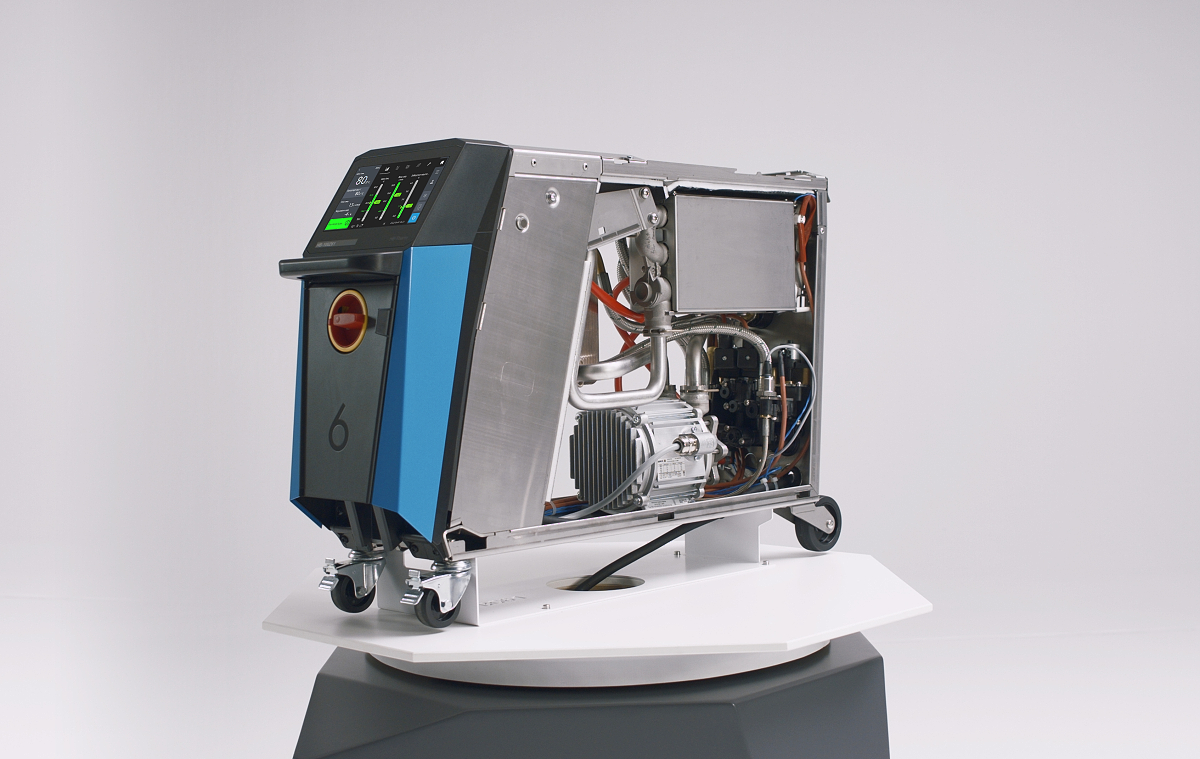 | |
| Thermo-6 temperature control units with a max. main line temperature of up to 100°C are equipped with a speed-controlled pump with split pot motor (Direct-Drive pump) as standard. | |
Always the optimal operating point: Control assistant "Energy Control"
Even without prior knowledge by the user, the "Energy Control" control assistant allows the optimal operating point to be achieved at all times in just a few steps. The result is up to 85% less power consumption. "Energy Control" correlates the variables of speed, flow rate, temperature difference and energy savings. Identifying the best operating point is facilitated by a simple visual representation that shows the current pump speed, the difference in Kelvin between main and return line and the daily savings in EUR. When the user changes one of the variables, the other two variables change accordingly, and the probable effect of the change becomes immediately apparent. The setting can be applied with the touch of a button.
Pump status monitoring: Everything in the right flow.
To comprehensively ensure process reliability and with it an optimal energy consumption at all times, early detection of the pump wear is important in this context. This not only enables a consistently stable quality of parts in production to be achieved, but also makes it easier to limit sources of error in the event of flow changes.
Increasing wear on the pump impeller becomes evident through falling pump pressure or flow rate. Swarf from the mould or particles from corrosion or calcification promote wear. The pump condition monitoring permanently monitors the pump and issues a warning in the event that a set limit value is not met.
Bundling different actions: This is how energy efficiency succeeds
Achieving an optimal energy efficiency in temperature control only works through the bundling of different actions, since optimising one area at the cost of another brings no overall benefit. The base is the use of a speed-controlled pump with a frequency converter. The correct pump dimensioning produces the lowest drive losses. For commonly used peripheral pumps, the maximum efficiency is at about half of the maximum flow. If a large pump cannot be avoided due to a planned universal application, the speed-controlled motor output can be reduced to the same value as for a correspondingly smaller pump due to the speed-controlled pump.
Added to this are the "Direct Drive" pumps with their higher efficiency on water units up to 100°C, the combination with the various possible operating modes of the new Thermo-6 control, and the "Energy Control" control assistant for the perfect operating point at all times. If the temperature control is optimised throughout with these available features on the new Thermo-6, then not only the quality and result will be right, but also the energy consumption in the process — always very easy to view on the display of the temperature control unit Thermo-6.
- autor:
- HB-Therm
















